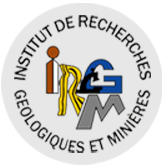The M-TROPICS CZO releases long-term meteorological, hydrological, sedimentary geochemical, and land use datasets in Cameroon, Lao PDR, and India
The CZO M-TROPICS (Multiscale TROPIcal CatchmentS) investigates the response of tropical catchments to global change based on long-term collection of meteorological, hydrological, sedimentary, geochemical, and land use data in partnership with academic and governmental institutions in various tropical countries. M-TROPICS includes in particular the experimental watersheds of Nyong in Cameroon (1994-), Houay Pano in Lao PDR (1998-), and of Mule Hole in India (2003-), which encompass a wide gradient of climates, bedrock types, topographies, and land-use conditions.
The datasets are published open access on the M-TROPICS website (https://mtropics.obs-mip.fr/catalogue-m-tropics/) and were the topic of three data notes published in the special issue « Research and Observatory Catchments: the Legacy and the Future » of the Hydrological Processes journal:

















